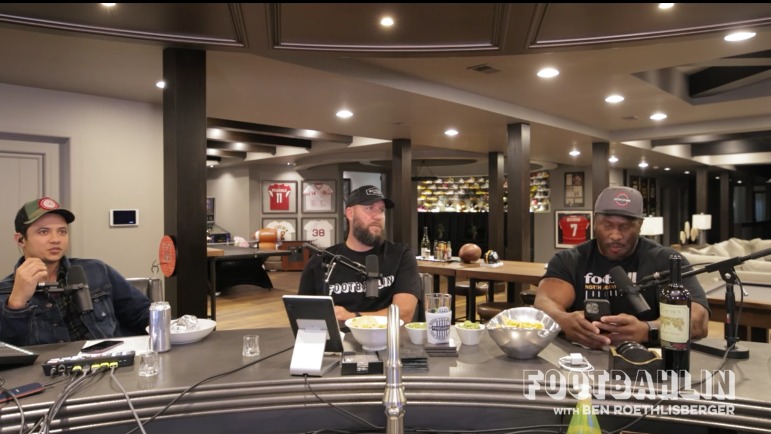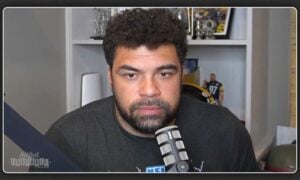The Pittsburgh Steelers franchise is known for its many all-time great defenses. From Hall Of Fame defensive tackle Joe Greene in the 70s to reigning Defensive Player Of The Year T.J. Watt, the Steelers’ organization indeed has no shortage of elite defensive talent throughout its storied history. Perhaps the most prominent defensive coordinator in team history is Dick LeBeau, who ran the zone blitz defense throughout his ten-year tenure with the team. This featured all-time greats such as safety Troy Polamalu and linebacker James Harrison. On Monday’s episode of Footbahlin with Ben Roethlisberger, Harrison was asked to compare LeBeau’s defense to the Steelers’ current one.
“I would say, and I’m not knocking it, but they don’t play the defense we played,” Harrison said when asked to compare LeBeau’s defenses to the Steelers’ current defense.”The linebackers actually rush, we dropped from time to time. We covered receivers, I haven’t seen anybody cover receivers. That Dick LeBeau defense, we could go from rushing to being man-to-man on a number 2 [receiver]. That complexity is what made it so hard for quarterbacks to read, figure it out, and be able to get things done against it.”
Indeed, the Steelers’ defense under LeBeau was just as nuanced as it was dominant. Nickel corners were often sent on a blitz, and outside linebackers were tasked with their coverage assignment. This naturally threw off many quarterbacks, especially the younger ones. This type of defense is fundamentally based on gambling. More often than not for LeBeau, it worked.
The Steelers’ current defense is coached by Teryl Austin, who was previously a defensive coordinator for the Cincinnati Bengals and Detroit Lions. Austin was preceded by Keith Butler, who had coached under Lebeau for a decade. However, it’s safe to assume that the Steelers diverted from the zone blitz upon Lebeau’s departure. That is, head coach Mike Tomlin, who has roots with the Tampa 2 defense, was in charge of defensive play calling.
“Every defense has one weakness,” Harrison continued. “You gotta exactly know what that is when you break it open. If you don’t, you’re guessing. You don’t know at all. If one person doesn’t execute the defense, you could strike a phantom on us. That’s why you didn’t have a lot of guys that started as rookies. It took you at least two years to learn. When you start guys as rookies that don’t know the defense, you break down the defense.”
Continuity is arguably what made the Steelers’ 2010s defenses the consistently dominant force that they were. The front seven essentially saw the same faces every season. Indeed, Harrison played the majority of his career with nose tackle Casey Hampton, defensive ends Brett Keisel and Aaron Smith, inside linebackers James Farrior and Larry Foote, and outside linebacker LaMarr Woodley. This type of continuity is rare, and the Steelers indeed had something special during that run.
As Harrison mentioned, the downside of this defense is the amount of time it takes to learn. It took the aforementioned group years of experience in the system together to achieve the success that they achieved. For the Steelers, asking a young Alex Highsmith or Bud Dupree to cover a receiver is a recipe for disaster. Even star defensive end Cameron Heyward did not see the field until his third year in the league.
It’s hard to tell whether any team will emulate the Steelers’ continuity, or if the zone blitz concept still works against modern NFL offenses. If one thing is for sure, it’s that the Steelers had something special with Harrison and company.








